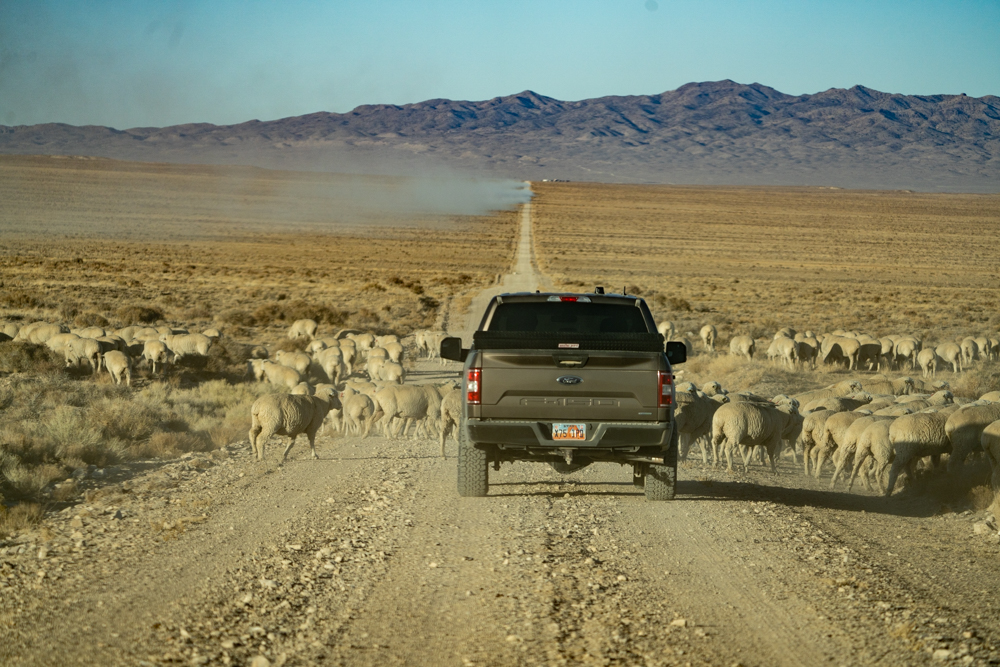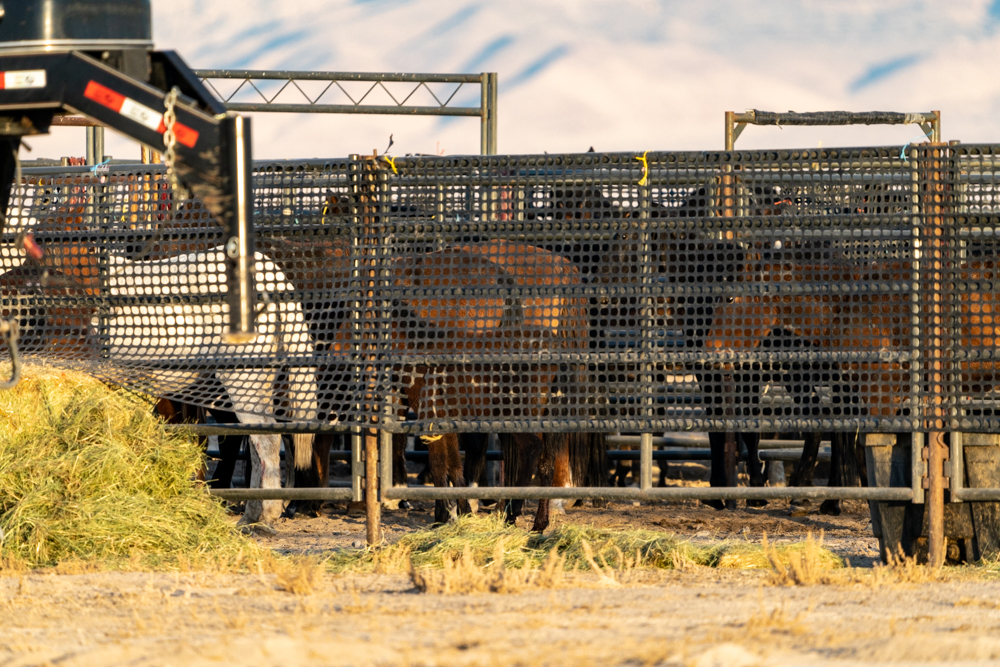The Confusion Herd Management Area is home to roughly just 551 wild horses on about 293,665 acres of public land in Utah, approximately 30 miles north from Garrison, Utah. However, the BLM wants to remove horses down to the low “Appropriate” Management Level (AML) of 70 horses. That’s 1 horse for every 3,350 acres!
At the same time, the Bureau of Land Management (BLM) authorizes approximately 10,400 cattle and sheep to graze in four grazing allotments within the HMA.
As noted in the final Plan for the herd, the BLM intends to perform the highly invasive and risky surgery—known as “ovariectomy via colpotomy”—on the wild mares. The mares will then be returned to the range after the procedure. This plan marks the first time that the procedure will be used by BLM as a population “management tool.”
This outdated procedure is a blind surgery in which a veterinarian inserts his arm into a mares’ abdominal cavity through an incision in the vaginal wall, manually locates the ovaries, then twists, severs and removes them using a rod-like tool with a chain on the end. The procedures are clearly unscientific, inhumane and dangerous, and will result in pain, suffering and potentially life-threatening complications for wild mares.
As soon as we got wind of the BLM’s plans for the mares from the Confusion HMA, we began to analyze our legal avenues and prepare for a lawsuit to protect the welfare interests of the wild mares and protect them from inhumane experimentation.
Please consider making a contribution towards our critical legal defense fund.
ROUNDUP REPORT
December 9, 2020: 33 wild horses lost their freedom. This was the last day of the Confusion roundup. 304 horses were removed, and 5 were killed.
It was 24 degrees to start the day out. AWHC was the only member of the public onsite.
Today’s operation was at a new trap site, technically outside of the Confusion HMA. We were North of Trout Creek, at the base of Ibapah Peak.
We were originally positioned with a clear view of the trap from a half-mile away, but then we were moved-- without explanation from BLM-- to an observation point a mile further North with no view of the trap at all. We could not see the pen or even the jute wing.
The horses began to perk their ears up at the buzzing sound from the helicopter. They then started to move away. During their exodus a single horse rolled in the dust, unknowing this would be its last moment to enjoy freedom. Then the helicopter appeared and they immediately bolted, but it gave chase.
The helicopter pushed them towards a valley between the rolling hills. One courageous horse split off. The helicopter circled back to rejoin it towards its herd. The entire herd was pushed into the valley, out of our sight, and presumably into the trap on the other side.
A 2nd run of 3 horses happened in the same fashion.
The 3rd, 4th, and 5th runs were only a few minutes after the second, so not much time for the crew to prepare space in the pens and settle the horses already captured, which is one reason why our observation should have a view of trap: We need to see so we can ensure no injuries are happening, and consult to BLM when we see things that can be altered for horse safety.
There were 3 bands that came into the valley nearly at the same time and they each split into different directions, and individual horses peeling off on their own from there. We could see what looked like a foal running South over the hill while its band ran East into the valley of the trap.
The first band was large, and we can't imagine this contractor being able to settle them in time to move them safely before the immediately next group came in minutes later. Minutes or only seconds between groups is not enough time for the horses to settle before being moved into the next pen.
The whole morning was this insanely fast pace, band after band after band, groups coming in without much if any time in between, and individual horses peeling off in their own direction as they tried to grasp onto freedom. Again, it is hard to imagine things going safely inside the pen we could not see, especially since one horse during this operation already has suffered a broken neck after crashing into the panels.
What looked like a 6th and 7th group came in, but those could have been parts of the earlier runs that could have split off outside of our view when they reached the rolling hills. We have no way of knowing because we couldn't see and there were so many groups, so many runs, in such a short time period. It had been less than 50 minutes since the day started at 9:04am MT with the first run, up until this point.
15 minutes later, at the start of hour 2, a band of 6 horses was chased in. A half-hour later the helicopter chased a solo horse around. Unclear if it had split off from an earlier group.
The BLM only reported 33 wild horses captured, which is hard to believe considering how many horses we witnessed being chased, and how many runs there were.
Today concluded the roundup operation.
December 7, 2020: 18 wild horses were captured today.
AWHC’s observer was the only member of the public in the field.
We were placed at the same observation point as yesterday, about 2.5 -3 miles to the trap site. Again we can only see the jute wing and not the pen, as the pen is in a dip. Heatwaves also obscured the view from this distance.
On one run a team of horses jumped the jute together, it appeared.
Another run a team of horses evaded or jumped the jute, hard to see from our far viewpoint.
Update on the collared mare from yesterday: We are told that the collared mare captured yesterday was from the Swasey HMA and had an IUD that was implanted a month ago. A researcher from Colorado University ran the tag and identified her, and so the BLM will release her tonight back into the Swasey HMA.
We watched them load the collared mare for release. Seeing this mare set free was beautiful. She burst from the trailer like lightening and immediately ran off.
There will be no roundup on Tuesday. They will look for a trap site for the next day.
December 6, 2020: 22 horses wild horses were captured today.
AWHC’s observer was the only member of the public in the field. The day got off to an early start, even though it took them a couple of hours to set up the new trap site. We arrived before crew and then had a 2 hour wait.
The observation was horrible at 2.5 to 3 miles from the trap site. We could only see the jute and not the pen itself. Observation was alongside the road by a sheep corral. There was a watering tank about 1 mile closer to trap along the same road, or a hillside only a half-mile from trap, but we were not put in these places. We were put where we couldn't observe. Officially there are no observations of the trap today because we couldn't see the trap, only the jute wing.
It was so far that with the heat waves the camera could not focus.
We saw cows wandering around, sometimes near the trap.
1st run: a small group of horses including a foal. One of the horses was a collared mare from Swasey who was given an IUD.
The trap area and run were not watered down, I saw plumes of dust from the helicopter even at a distance.
There don't seem to be as many horses in the area as was originally claimed, but also, they are very scattered about in steep rolling hills along the horizons.
December 5, 2020: 7 wild horses were captured today, and there were 2 deaths. According to BLM, they were 2 mares that were euthanized due to body condition.
One horse evaded trap running down the road, then ran over a very steep and rocky ridge.
A black horse that was lassoed at neck was extremely stressed, and kept rearing up in attempt to escape. He was seen crashing to the ground.
2 went over jute, but both were soon roped out of our sight on the other side of the hill.
Another lassoed horse that was fighting to get away was yanked back so hard that they flipped backward, this time landing on their head and neck.
The horse rose from the ground and continued to fight against the lasso.
December 4, 2020: 16 wild horses were captured.
- 8:30am departure time, later than usual.
- We were at a new trap site, on the west side of the Confusion Mountain range.
- Very rocky and hilly terrain.
- Only a few very small runs.
- Horses ran along a very steep rocky ridge trying to flee helicopter, to start the day.
- First run: A solo foal comes in, led by the Judas horse. Unclear if they found the mother at all today.
- Trap was very dusty and not watered down.
- There was some pen smashing, with the horses trying to come back and out.
- See # 4076 for a dramatic head-smash photo.
- A white horse was roped.
- On another run they had a roped black foal or colt. Like the 1st catch of the day, unclear if they caught their mother. AWHC has video showing the foal fighting hard against being lassoed.
December 3, 2020: 45 wild horses lost their freedom today.
It was only 1 degree on the drive to the trap site and reach approximately, then 20 degrees at the start of the roundup.
We witnessed a lot of livestock, three groups of cows to the North and sheep grazing to the south.
There were 12 runs today that brought in 45 horses in total. Thankfully, there were no deaths today.
Several horses were roped today.
The helicopter appeared to be too close to the horses today.
No water was put at the trap site today, and the dust kicked up everywhere.
Twice in the day horses escaped to freedom.
One jumped the jute. Later a set of two evaded the jute. The pilots eventually gave up and horses remained free.
December 2, 2020: 49 wild horses were rounded up and removed today. Two horses lost their lives as a result of the operation.
A 2-year-old mare broke her neck and died in the sorting pen. A sled was used by about 5 or 6 members of the contractors to pull the sled and horse into the trailer.
The other captured mustangs huddled over her body.
A wet mare was lassoed at end of the day to reunite her with her captured 4-month-old foal. But was euthanized in the field, according to BLM for low body condition. A vet was not consulted. Before her death, we witnessed her evading the helicopter for about 20 to 30 minutes, dodging back and forth. Her stamina seemed okay during that time.
BLM COR did pause the operation after the death to come up and talk with the public, discussing the causes, and listening to suggestions.
A black or bay horse was seen on the ground in the sorting pen and stayed down for minutes.
A grey horse was seen crashing into panels.
The helicopters continued to be close on the horses today.
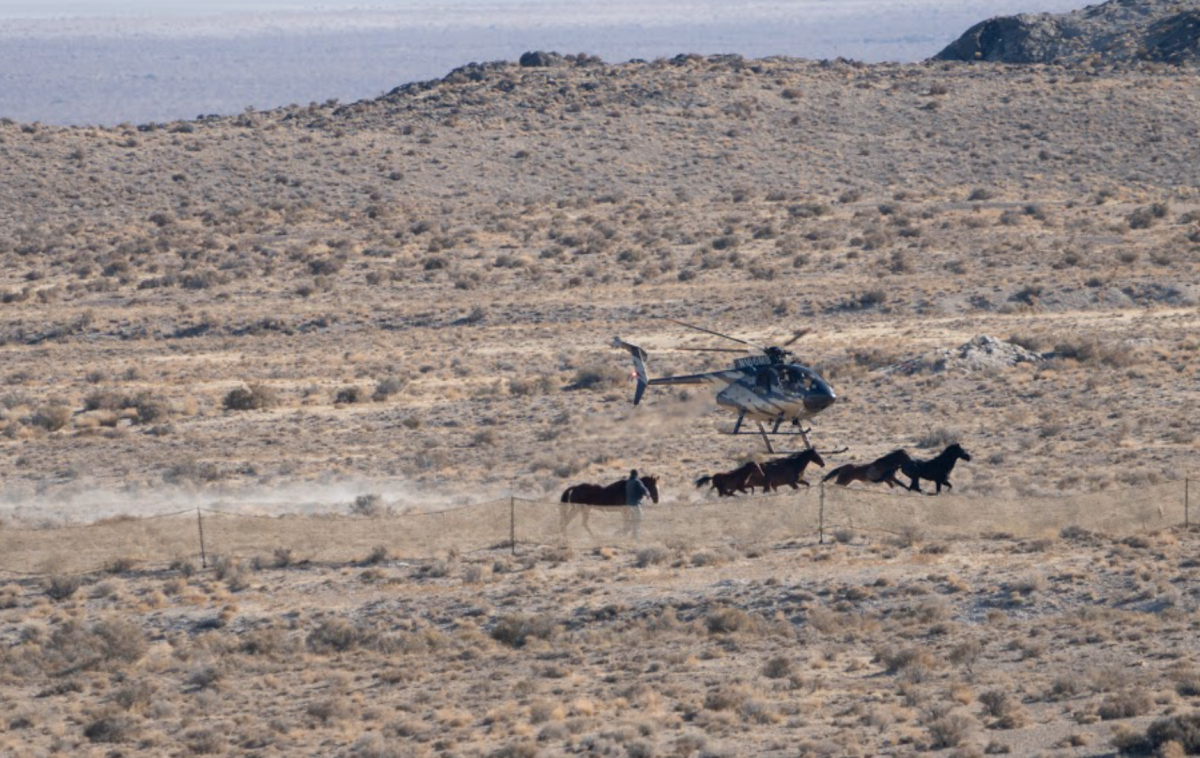
December 1, 2020: 47 wild horses lost their freedom today.
It was very cold and windy today. We were at a new trap site and observation point today.
Cows could be seen to the North on the road. Sheep could be seen to the South. A watering truck for the cattle rancher interrupted operations driving on the road a few times.
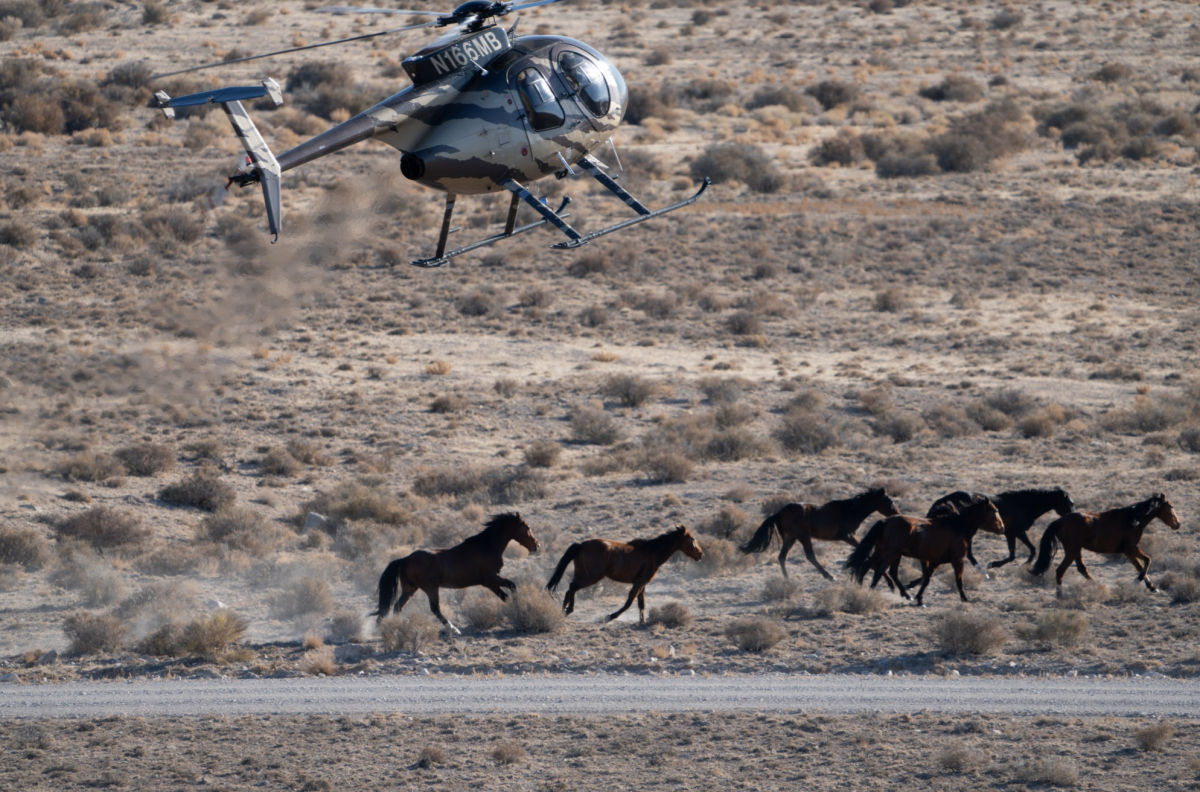

At one point a mare came right by our observation point. She had evaded capture for today.
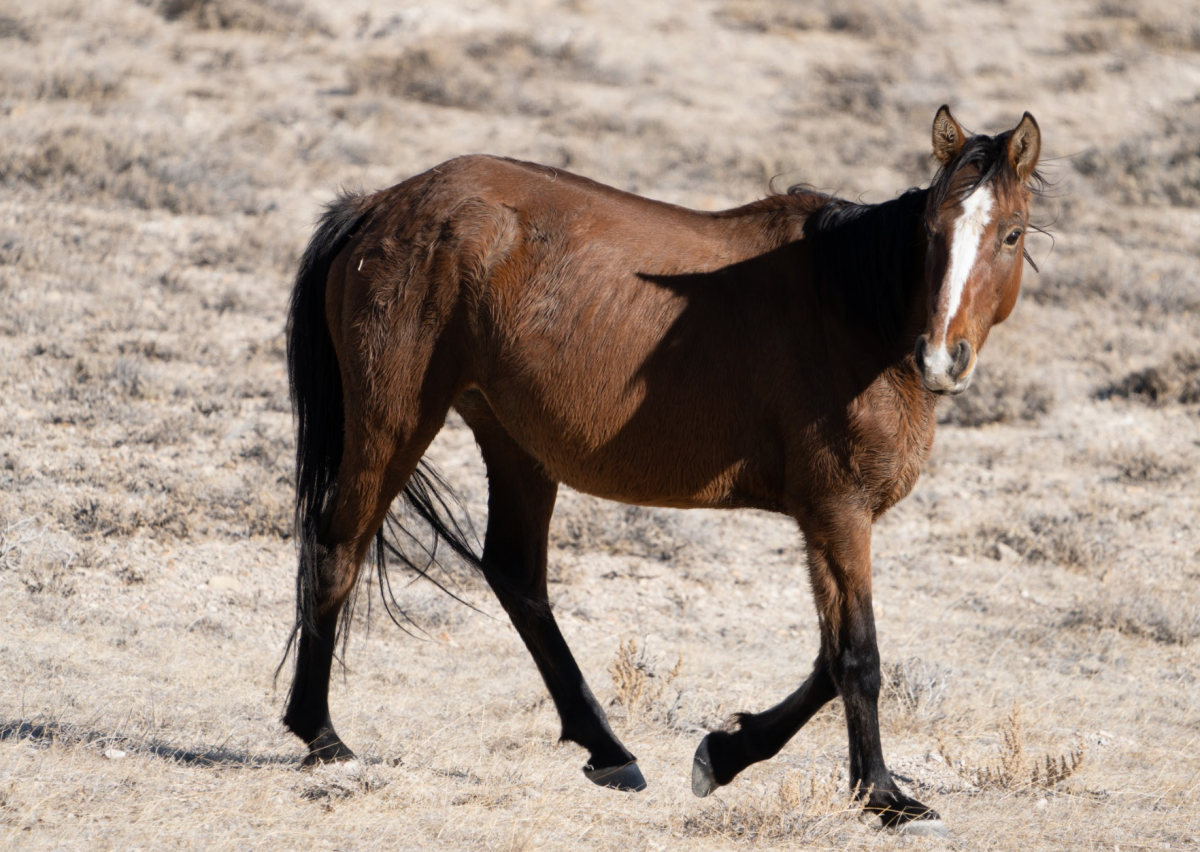
Horses constantly defied the two helicopters, changing direction and evading the trap wing.
From our vantage point and photos, it looked like the helicopters frequently came close to the horses.
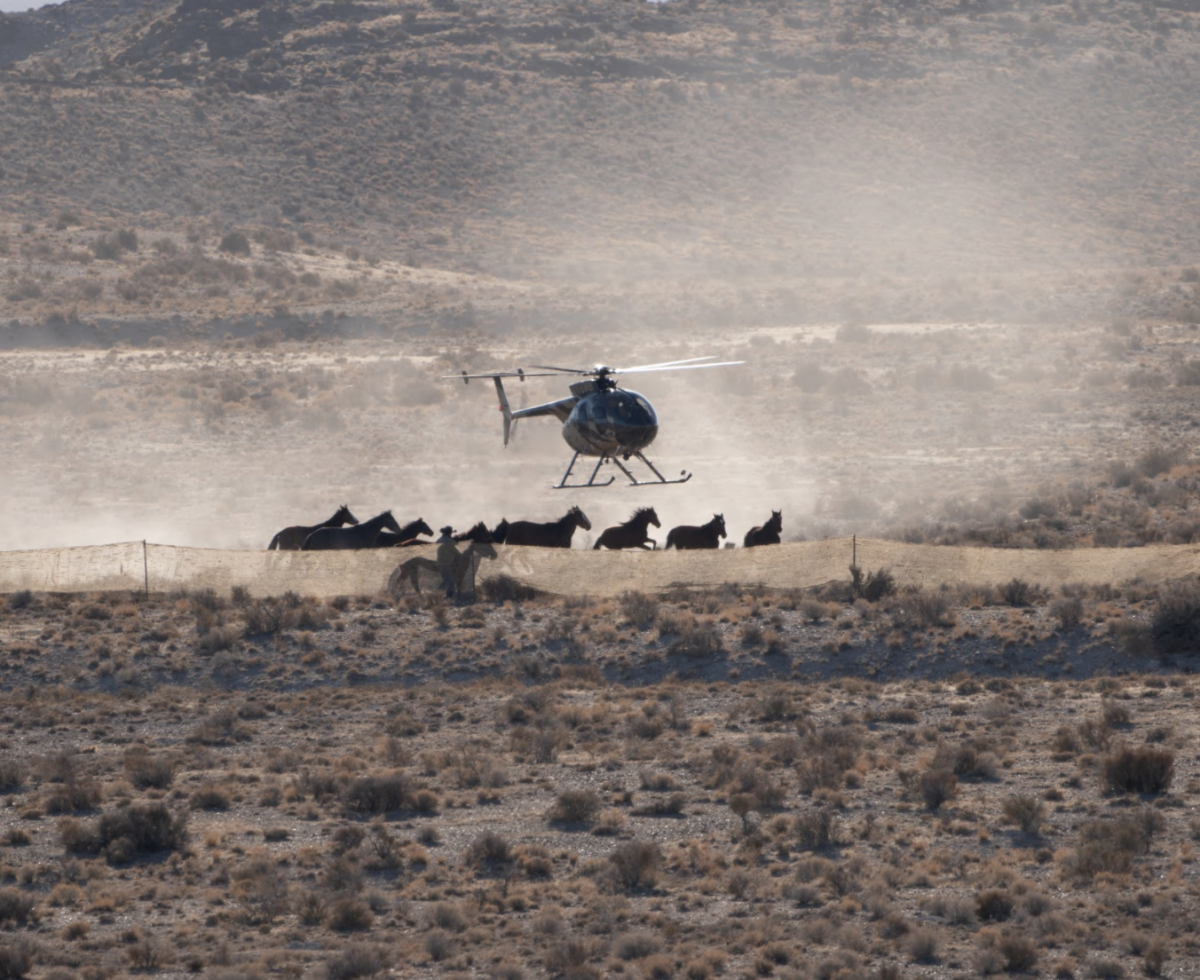
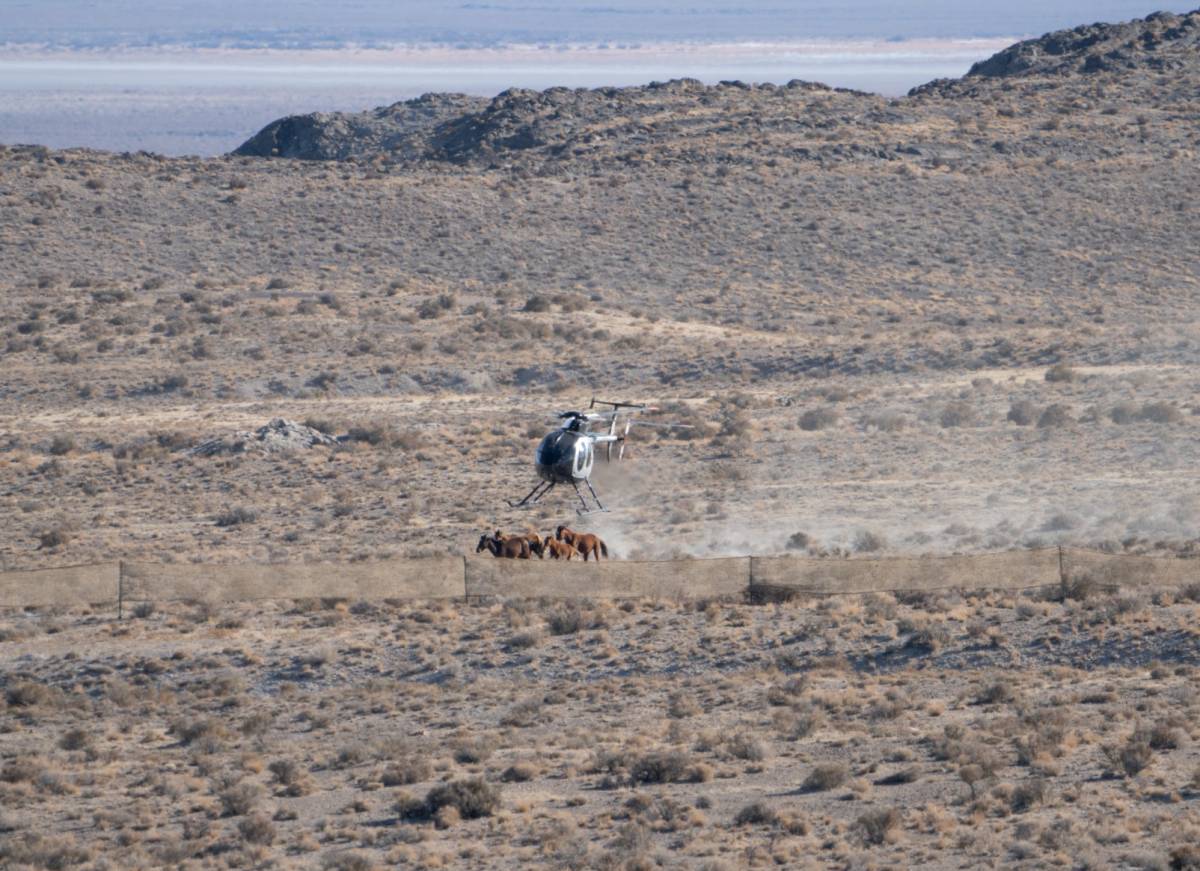
At the end of the day, two horses outmaneuvered the helicopter. According to our observer, they would stop and run directly back underneath the looming helicopter. They were never captured.
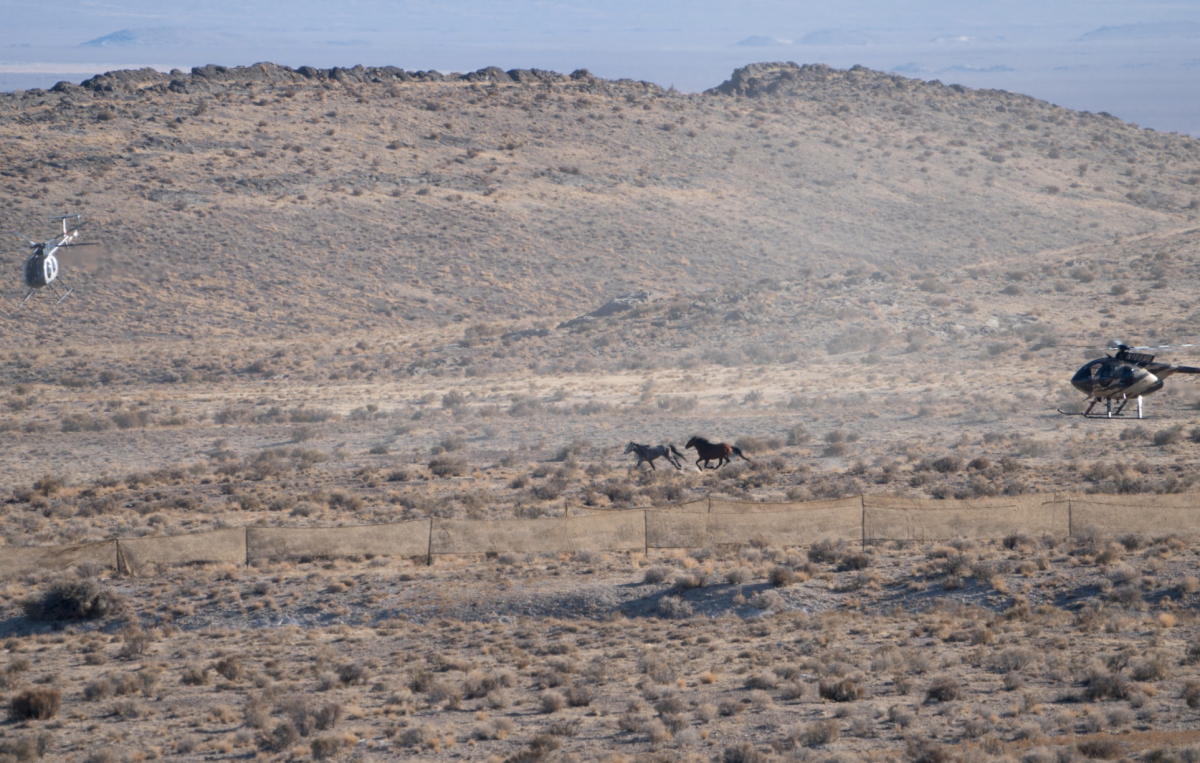
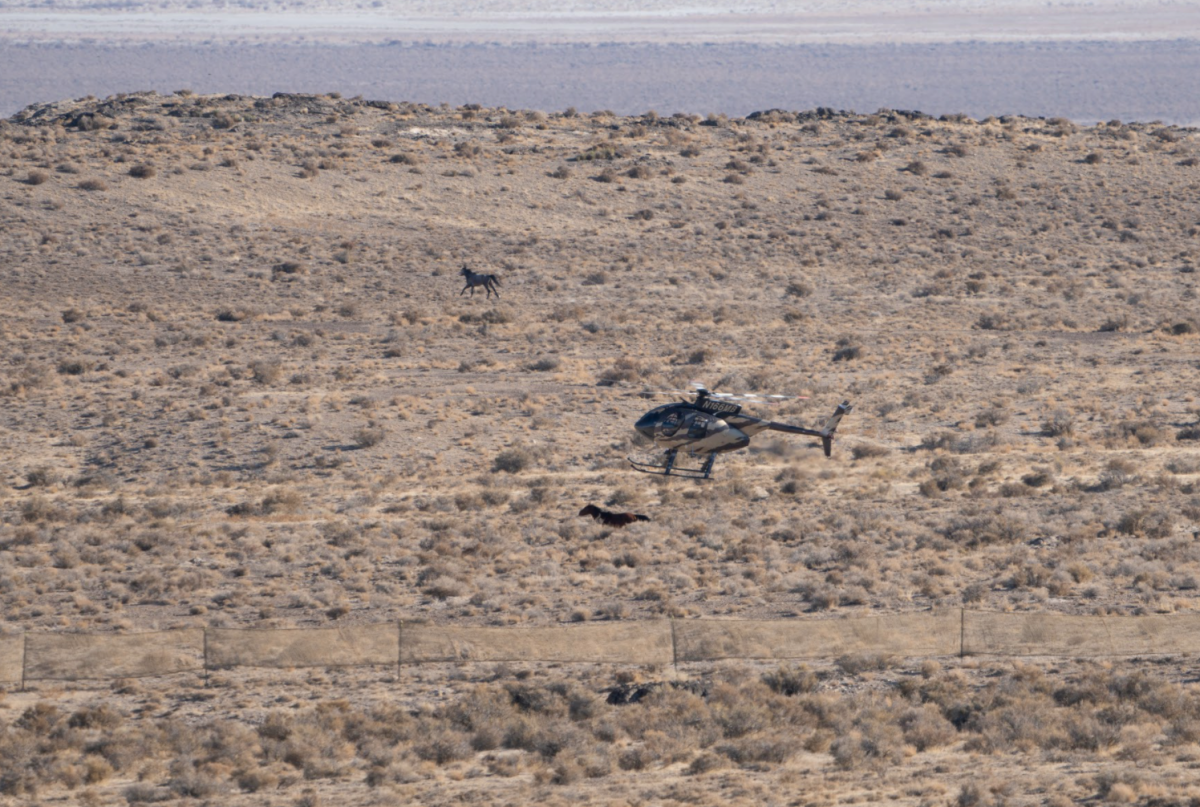
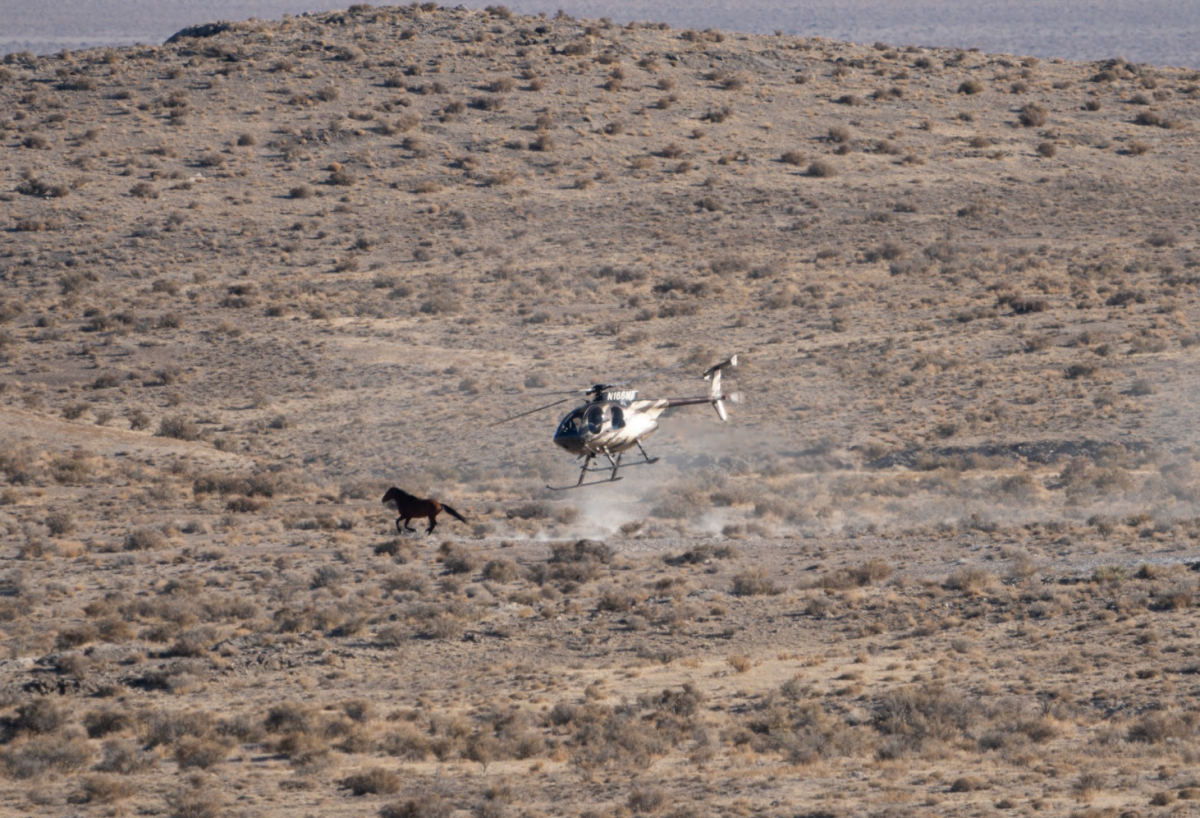
The grey horse being chased was teetering along the edge of a ridge. Thankfully the helicopter eventually let off, but we're not sure how the horse faired down the mountain.
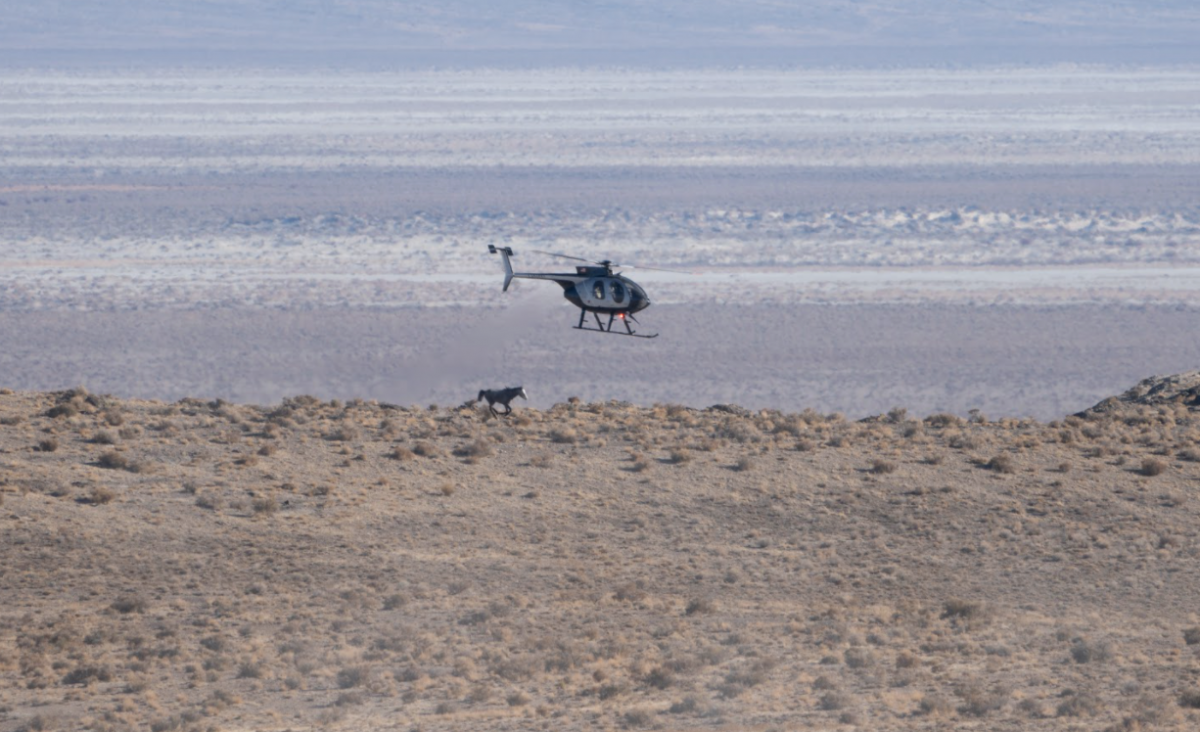
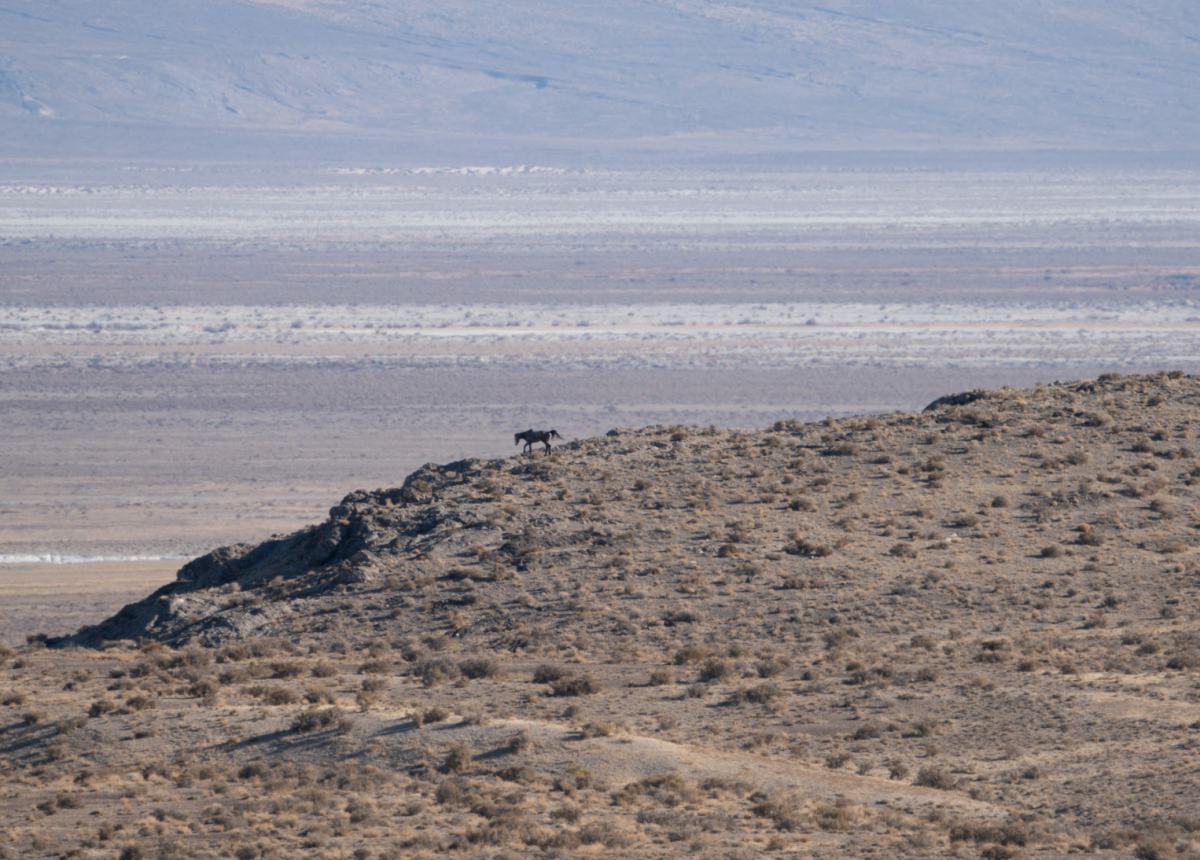
The temporary holding today was actually the trap itself which is very uncommon.
At holding horses huddled for comfort but also would kick at each other for the too-close proximity to each other. They seemed stressed.
Once in the pen, horses would often smash at full speed against the panels.
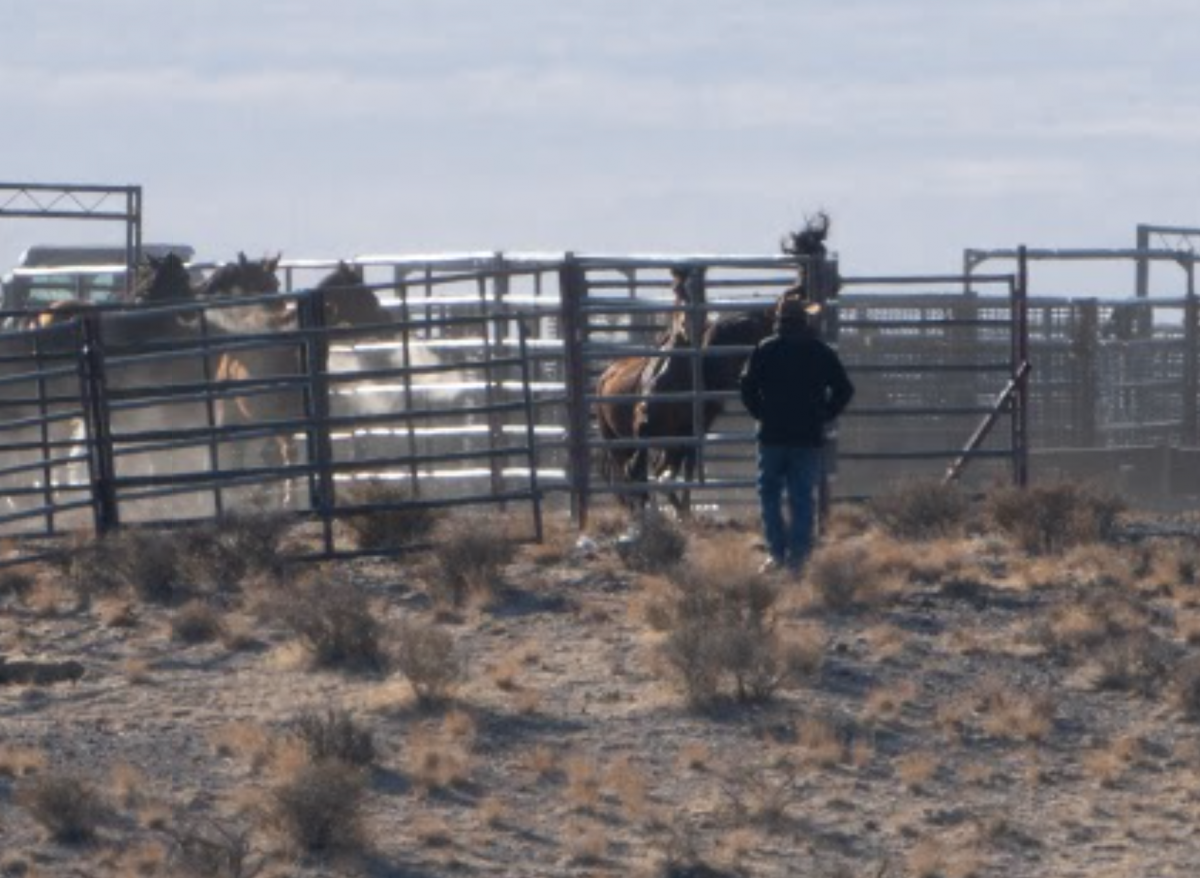
Special thanks to the two rangers who returned our field representative's tripod that had been accidentally left behind by holding the day prior.
November 30, 2020: 11 wild horses were rounded up and removed. AWHC's observer was not onsite but did go to temporary holding to check out the horses there. There was one death, according to BLM "due to a severe laceration and probable fracture to the left hind leg."

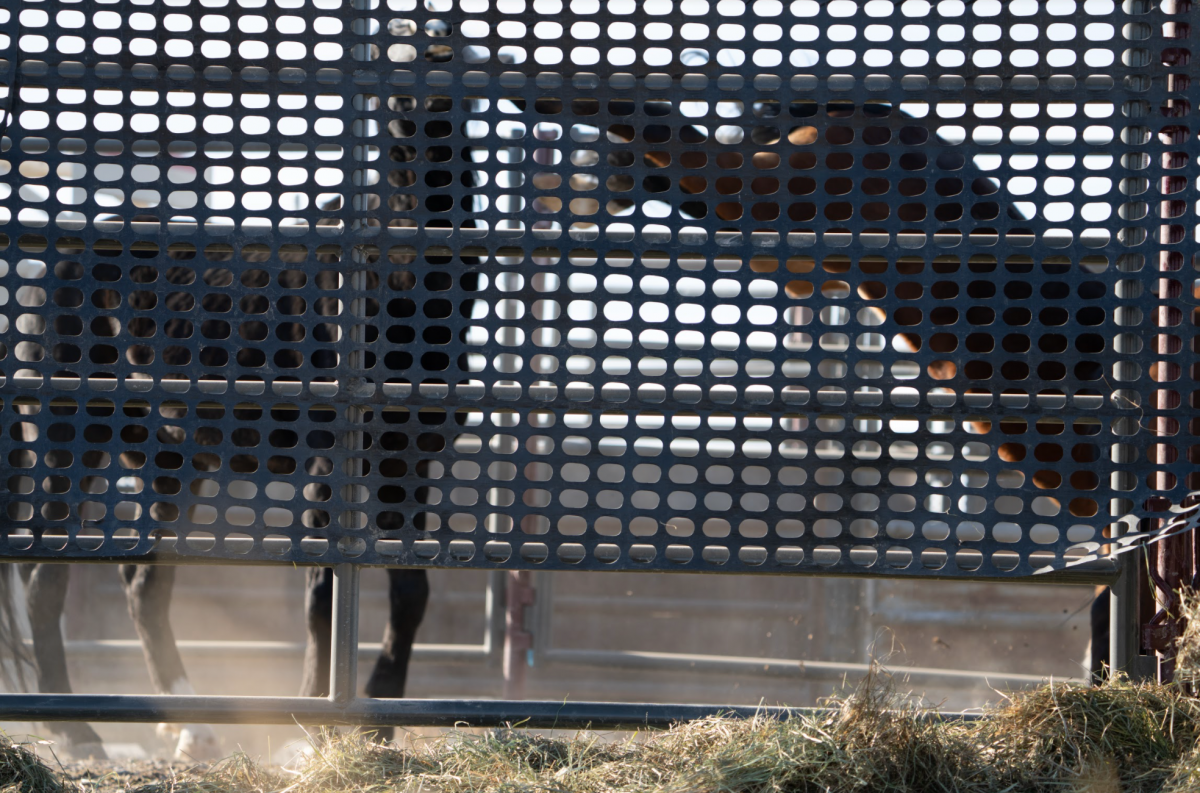
November 29, 2020: 56 wild horses from the Confusion HMA were rounded up and removed on the first day of the operation.
We met the BLM caravan at the Border Inn in Baker NV, which is right on the border of NV and Utah. Departure time is 6am Mountain Time, even though we meet at a location observing Pacific Time.
AWHC's representative was one of two public observers on sight. It was very cold, between 12-19 degrees in the early morning.
The helicopter contractor for this operation were the Cattoors, and they were using two helicopters.
Our observation point was was pretty far, about 3/4 mile from the trapsite, despite there being closer ridges that would have worked for observation. Heatwaves obscured our vision and did not allow us to see clearly into the trap.

A large herd of cows was seen from the observation point grazing on the abundant vegetation within the wild horse HMA.
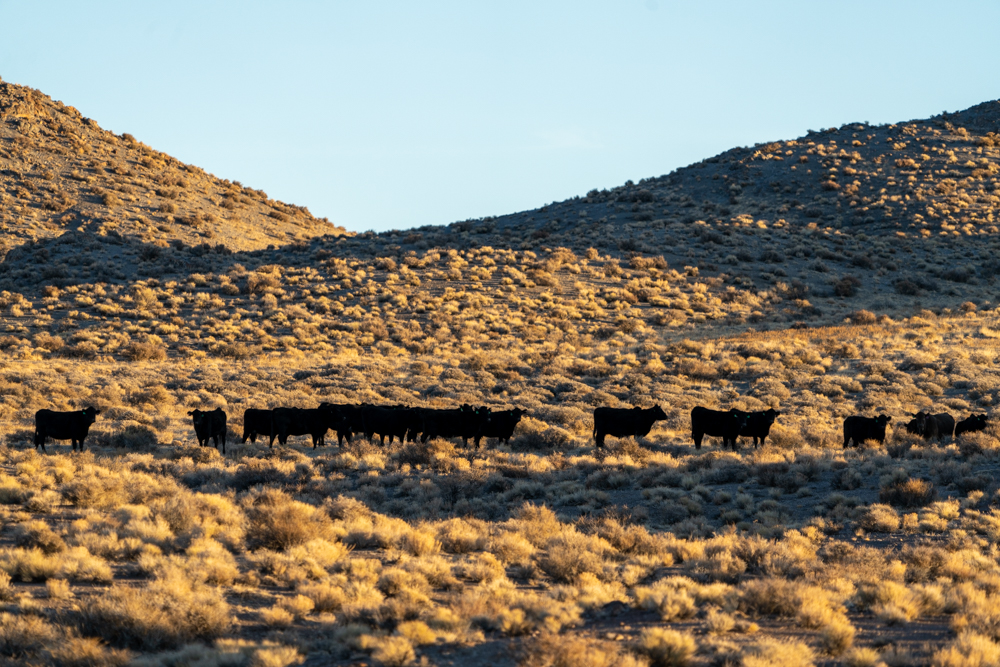
The first run of the day was small. Some horses were jumping up. They weren't given time to settle before being immediately corralled into the trailer. The trailer was removed and brought back during the first group's loading.
The second run was smaller, and a foal was seen way behind. A collision happened at pen entrance with the late arrival of foal and jumping adults trying to go back out the other way... the foal was knocked to the ground.
The third run was made up of a small group of 3 that were very rowdy and frequently defied the helicopter, often splitting up or running under the helicopter in a new direction.
Many runs of small groups throughout the day. Horses frequently evaded and split off.
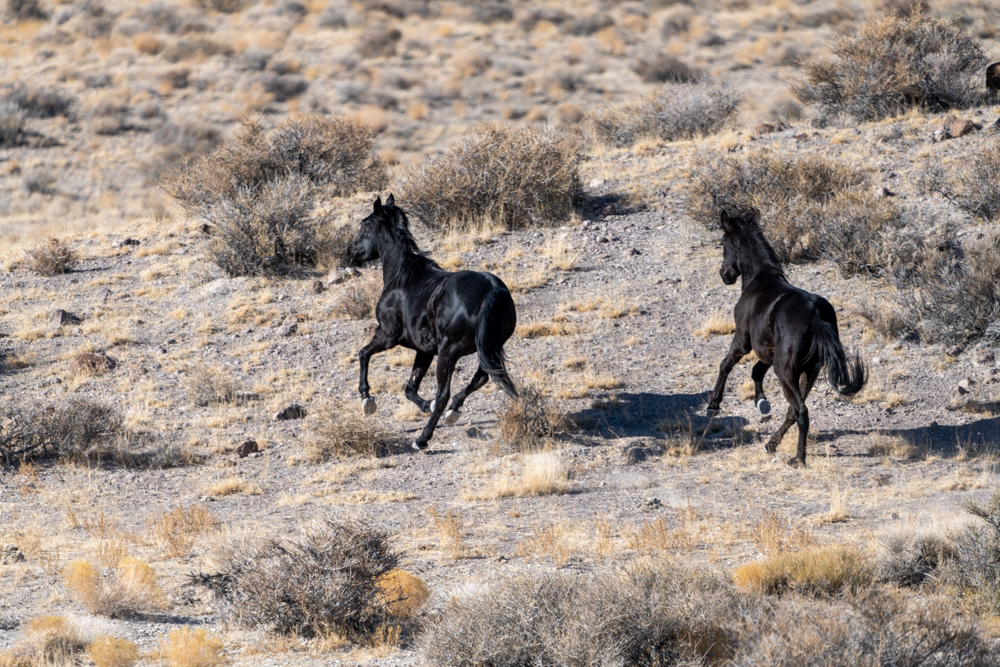
They lassoed one adult, reasons not given. It was evading. They also lassoed a foal.

Day stopped at 42 degrees.
